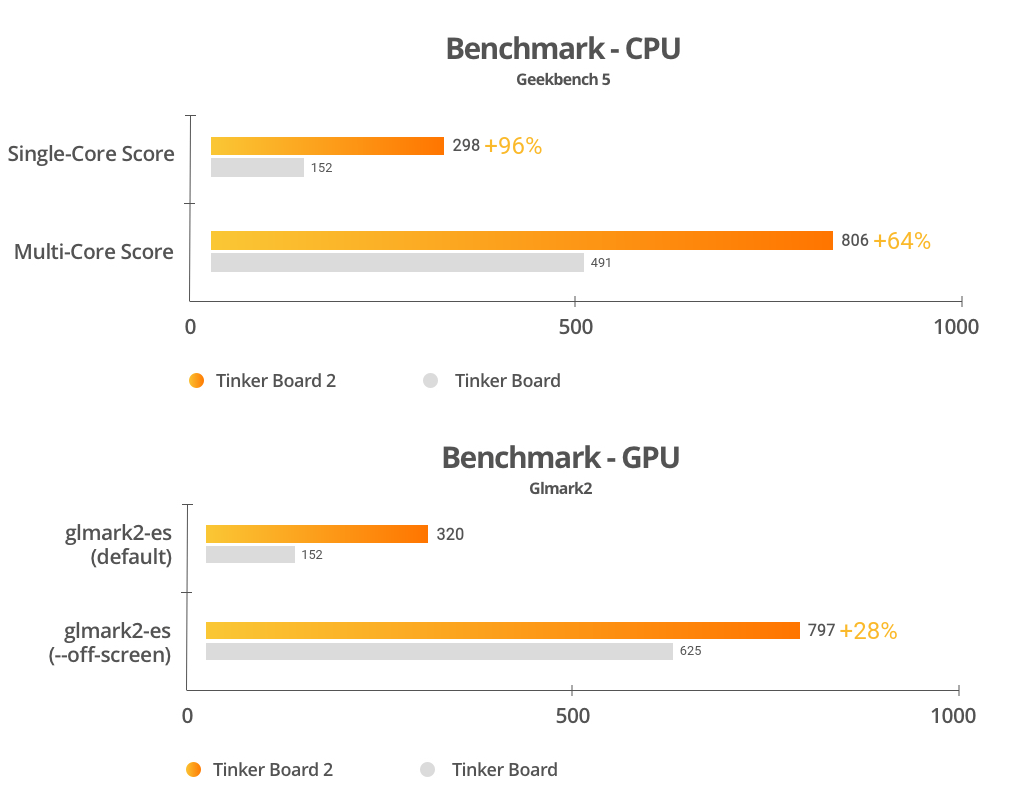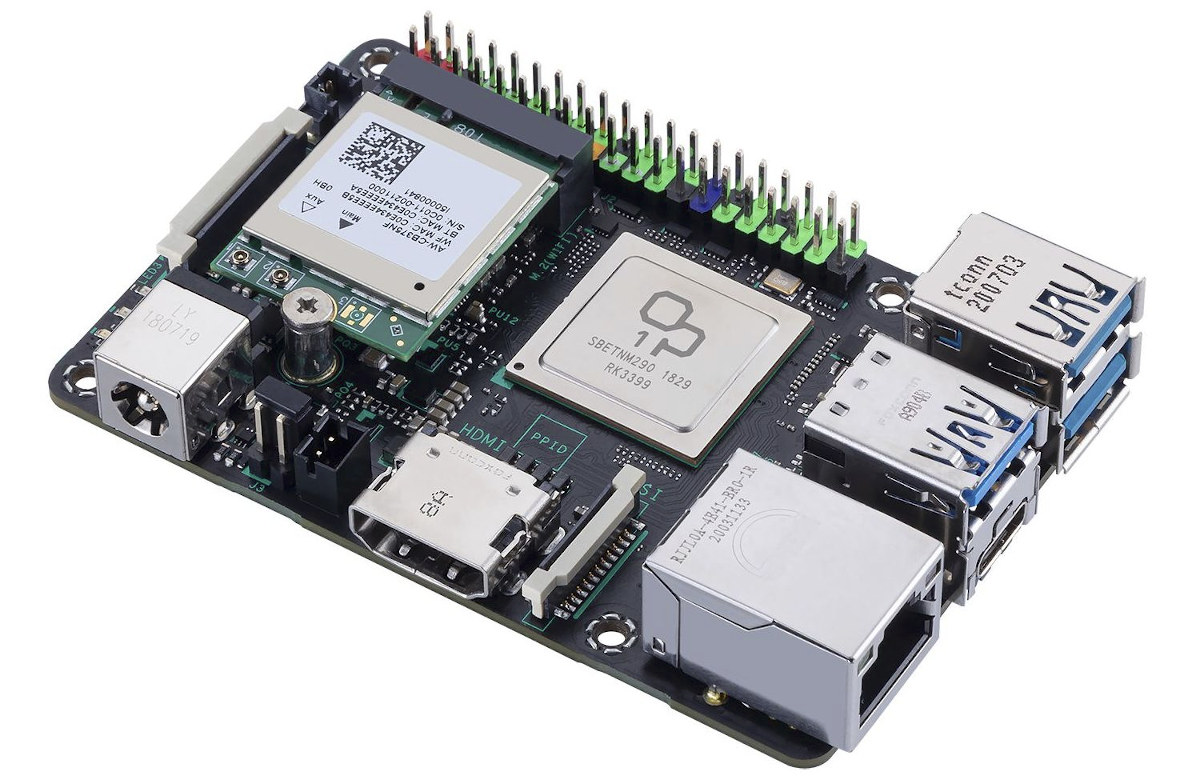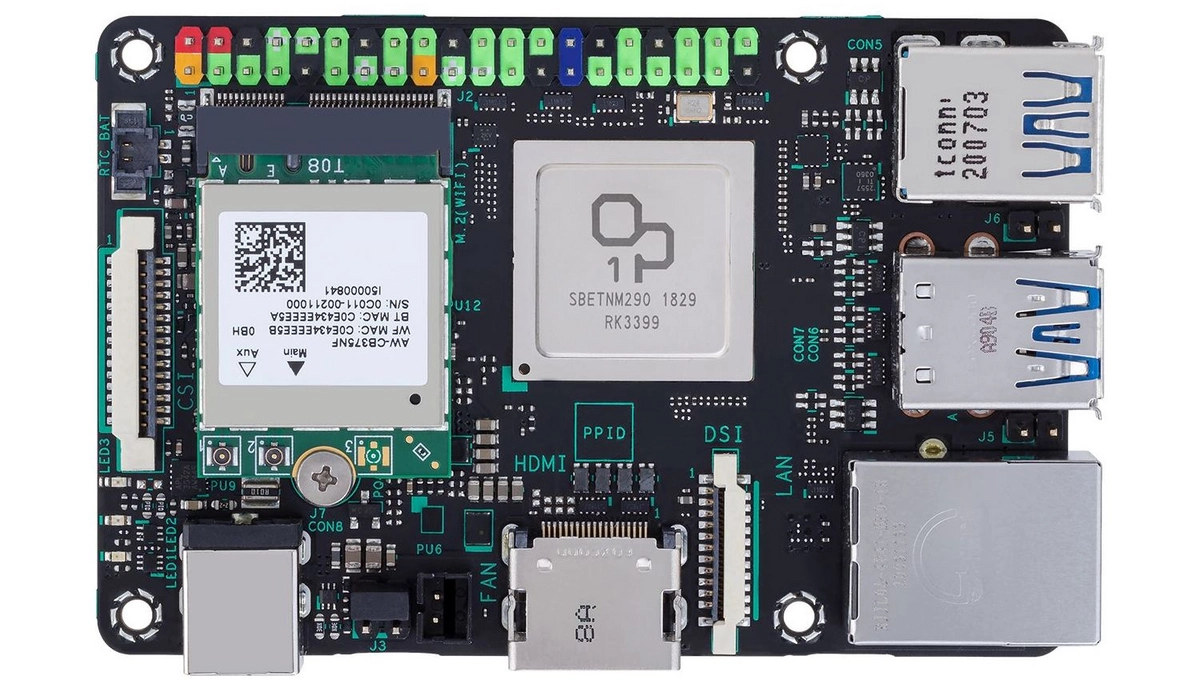ASUS surprised the maker community in 2017 with the introduction of the Rochchip RK3288 powered Tinker Board to compete as Raspberry Pi 3 Model B. It was followed by Tinker Board S with built-in storage and other new features, as well as Tinker Board Edge T and Edge R SBC’s both with an AI accelerator namely Google Edge TPU and the NPU inside Rockchip RK3399Pro.
The company has now launched a new model called Tinker Board 2 without AI accelerator, but featuring Rockchip RK3399, or more exactly the higher grade Rockchip OP1 used in Chromebooks, delivering 96% faster single-thread performance and a 64% boost in multi-core performance compared to the Rockchip RK3288 processor found in the original Tinker Board, while the GPU is around 28% faster with glmark2-es2 off-screen benchmark.
There are two variants of the board with Tinker Board 2 and Tinker Board 2S with the latter adding onboard eMMC flash storage. Both share the following specifications with bold highlights showing differences against the original Tinker Board:
- SoC – Rockchip 3399 (OP1) hexa-core processor with 2x Arm Cortex-A72 cores up to 2.0 GHz, four Cortex-A53 cores @ up to 1.5 GHz, Mali-T860 MP4 GPU @ 800 MHz
- System Memory – 2GB or 4GB LPDDR4, dual-channel
- Storage
- MicroSD slot
- Tinker Board 2S only – 16GB eMMC flash
- Video output & Display I/F
- 1x HDMI 2.0 up to 4Kp60 with HDMI CEC
- 1x 22-pin 4-lane MIPI DSI connector
- 1x DisplayPort 1.2 via USB-C port
- Audio –
1x 3.5mm audio jack;Realtek HD codec with 192KHz/24-bit audio
- Camera – 15-pin MIPI CSI connector
- Connectivity – Gigabit Ethernet, dual-band 802.11 b/g/n/ac WiFi 5 2T2R, Bluetooth 5.0
- USB – 3x USB 3.2 Gen1 host ports, 1x USB 3.2 Gen 1 Type-C OTG port
- Expansion Headers
- 40-pin header with GPIOs, SPI, I2C, UART, PWM,
2-pin contact point with 1x PWM signal, 1x S/PDIF signal
- Misc – Button, fan header, RTC battery header, power-on/recovery headers
- Power Supply – 12V to 19V via DC jack
- Dimensions – 85.6 x 54 cm
Besides the faster processor, the new Tinker Board 2 also supports more memory up to 4GB LPDDR4, adds a USB-C port with DisplayPort Alt mode, USB 3.2 ports, a faster WiFi 5 & Bluetooth 5.0 card instead of a soldered WiFI 4 + Bt 4.x module, and support for RTC.
The company will provide support for Android 10 (in Q1 2021) with support for the Android Neural Networks API 1.2 and Adiantum encryption, and “Pro-grade admin” tools such as the Asus IoT Cloud Console for data management and analysis, and “ASUS Industrial Android FOTA” for seamless upgrades of the firmware. Somehow there’s no word about Linux, albeit the original Tinker Board both Android and the Debian-based TinkerOS. Eventually, more details about OS support should surface on the documentation page.

Via Clubic and Liliputing

Jean-Luc started CNX Software in 2010 as a part-time endeavor, before quitting his job as a software engineering manager, and starting to write daily news, and reviews full time later in 2011.
Support CNX Software! Donate via cryptocurrencies, become a Patron on Patreon, or purchase goods on Amazon or Aliexpress. We also use affiliate links in articles to earn commissions if you make a purchase after clicking on those links.





